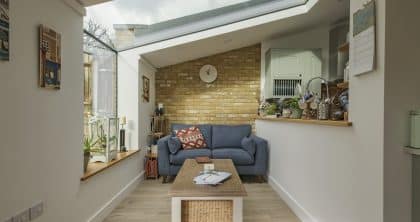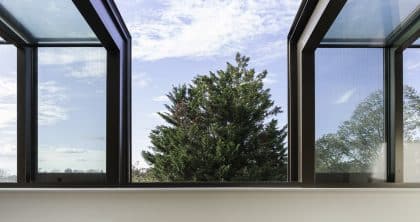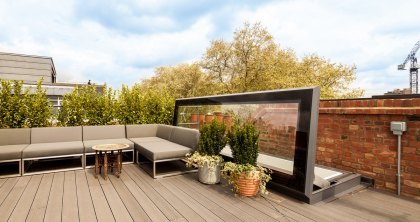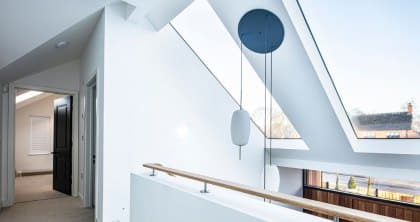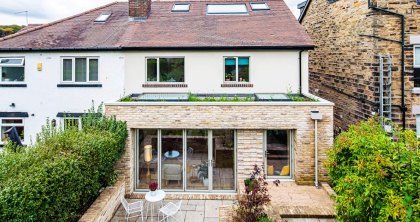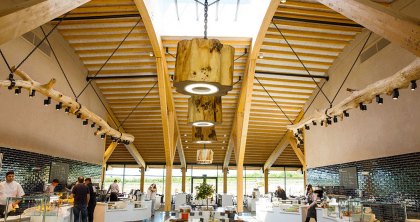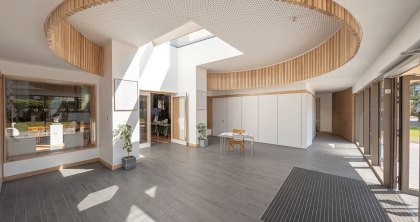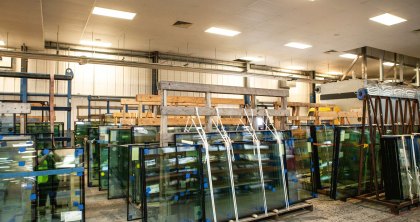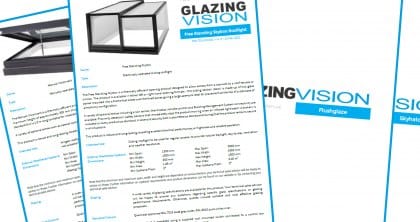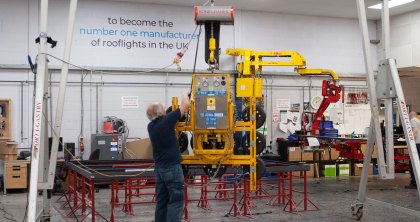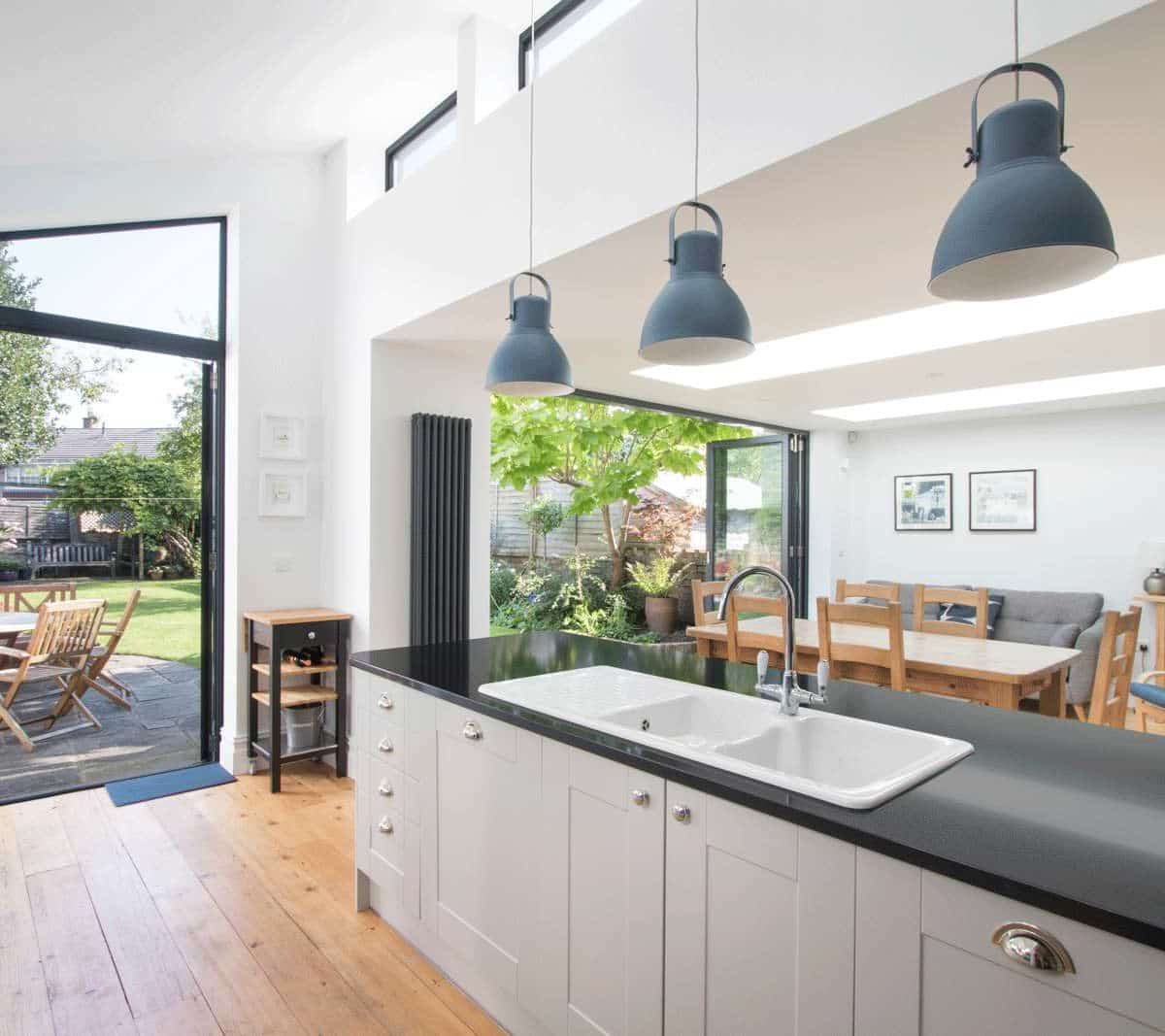Posted on March 6, 2024 in Blog, News, Sustainability, Technical
Rooflights featuring toughened or laminated glass, or both, have different applications in construction projects.
Using bespoke rooflights to transform light and space
Approximately 70% of the shortlisted projects for the RIBA House of the Year 2023 incorporated rooflights. This comes as little surprise considering their capacity to unleash design possibilities, harness daylight, enhance ventilation, and utilise previously unused areas. Jon Shooter, Managing Director at Glazing Vision, examines recent projects to explore how architects have employed rooflights to overcome specification hurdles.
Flooding space with light
Numerous Victorian residences suffer from dim interiors, prompting occupants to heavily rely on artificial lighting, which adversely affects wellbeing, energy efficiency, and sustainability. When Oasys Property Solutions undertook the design of a north-east facing extension featuring an expansive kitchen/dining/living area, ensuring ample daylight was imperative.
We collaborated with Simon Heckford, Director at Oasys Property Solutions, offering technical guidance and specifying two flat Flushgaze rooflights alongside a custom wall abutted rooflight. Simon remarked, “There’s no questioning the quality and consistency of natural light from the rooflights. Even in the bleakest weather, they contribute to the light and airy feel of the extension.”
Preventing overheating
The climate crisis means regulating temperatures is increasingly important. Rooflights can play an integral role in preventing overheating and circulating fresh air. They can be operated by the homeowner, or state-of-the-art automatic opening rooflights can be integrated into building management systems. The former solution was chosen by Chris Dyson Architects to moderate temperatures in a traditional orangery and extension at a north London residence.
Insulated walls and energy-efficient double-glazing keep the orangery warm in winter. In summer, ventilation and comfort is controlled by opening the doors and a full-width Dual Sliding Over Fixed Rooflight equipped with sliding elements.
Manufactured in a bespoke bronze finish, this exceptionally large flat rooflight was precision-engineered in eight sections. The two end sections were manufactured to slide over the six fixed central sections, traversing in a side-to-side, rather than an up-and-down slope operation. The sliding sections are electronically controlled to provide a quiet and efficient operation, with a manual override for safety.
Bringing the outside in
City living provides many benefits, but it can mean there’s little or no outside space. To increase ventilation and bring the outside in, a stunning penthouse in Knightsbridge has incorporated a novel solution: open air dining within the confines of the building. Crucially, the clients wanted the option to close this off, making the room beneath weathertight, while maintaining high-levels of daylight.
The layout of the flat roof needed a substantial length of fixed glazing to be installed close to the proposed location of the rooflight, so options were limited. To overcome this, we designed a bespoke Sliding Over Roof Rooflight. This allowed a 100 per cent clear opening by retracting two glass sections independently in a sliding stacking arrangement. This maintains a minimal footprint as the glass only takes up half the adjacent roof space when fully retracted.
Combining style with function
Since the pandemic, homeowners have been keen to convert flat roofs into usable spaces, as was the case in a Victorian terrace extension undertaken by Mulroy Architects. The challenge for Mulroy was to incorporate a rooflight above the kitchen, and utilise the roof space as a terrace. The rooflight needed to withstand foot traffic for unrestricted access. A flush finish was also needed, and the small pitch meant there was a potential drainage issue.
These challenges were overcome thanks to a large Fixed Walk-On Rooflight. As well as providing daylight and attractive sky views, its frameless design maximised usable space on the balcony. The rooflight was engineered with a 25.5mm clear laminate outer pane, 14mm Argon-filled warm edge spacer cavity, and 6mm heat soak tested toughened inner pane. It was tested to Class 0 and designed to withstand the uniform loadings of 1.5kN/m² and concentrated loadings of 2.0kN in accordance with BS EN 1991-1-1-1:2002 from the projected foot traffic.
Andrew Mulroy of Mulroy Architects said: “The client was very pleased with the rooflight and it delivered everything that was set out in the brief.”
Creating elegant access
Of course, not every outdoor space can be accessed from an adjacent room. When designing six modern townhouses in Islington, Tasou Associates incorporated roof terraces accessed by floating staircases. A major consideration was the headroom needed to meet Building Regulation approved document K requirements.
To achieve this, the architect specified three-wall glass box rooflights rather than manual hatch products. The access rooflights are fixed within the walls of the building, with one section sliding over a fixed one, which creates an approximate 50 per cent clear opening so there is no need for additional balustrades.
As we’ve seen, rooflights and roof windows can transform a space by creating atmosphere with pools of light, opening a room up to the sky, or providing access to unused areas. To learn more about specifying rooflights that bring aesthetic appeal and functionality to your next project, download our suite of technical whitepapers covering the requirements of Approved Documents L, F, O, K & Q or request a CPD.
Contact Details
For more information, please call 01379 65830, email, or visit the Glazing Vision website.

